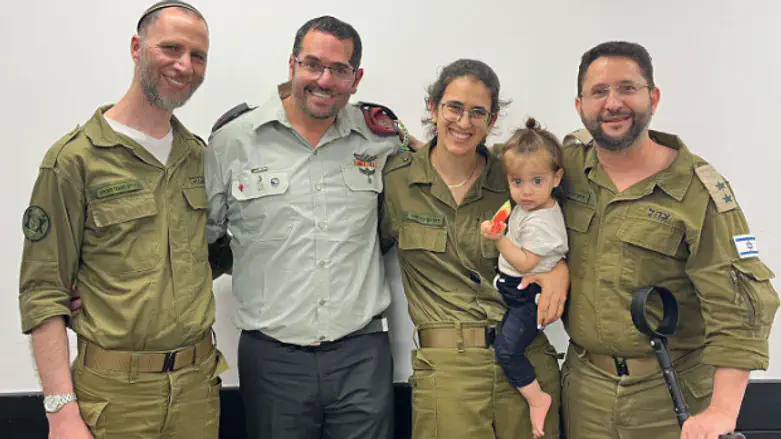
Aharon Karov, the most critically-injured soldier in Operation Cast Lead some 16 years ago, has re-enlisted in the IDF - this time, as part of a team creating the Disabled Soldiers Department.
Karov, who became a symbol of determination to recover, has dedicated the past few years to helping youth at risk, with the goal of igniting their faith in their own abilities.
Following the October 7 massacre, he was a partner in creating the "Continuing Life" initiative, a military initiative in which those who were injured in the past offer support to those recently injured.
"I understood that rehabilitation does not end in the hospital, but continues throughout life," he explained.
As part of his new role, Karov will lead the field of placement and employment for injured IDF soldiers in a new placement department created under the Disabled Soldiers Department.
"Our goal is clear: To allow anyone injured who is interested in doing so to put his uniform back on, contribute, and turn his injury into a mission," Karov said.
"I am proud to once again don a uniform, to be part of a system which chooses to turn pain into action and rehabilitation into hope," he said emotionally.
The IDF praised Karov's decision to join the new team, adding that the creation of the Disabled Soldiers Department and its placement desk aim to provide a new track for injured soldiers who wish to rejoin and serve in the military.
Karov, commander of a combat company in the Paratrooper Brigade, became famous when he was critically wounded in the first days of Operation Cast Lead. His story was unique in that he had been called up for service in Cast Lead on the day after his wedding.
Less than three days after he was called up, he was critically wounded in a booby-trapped house in Gaza, and was flown to Beilinson Hospital in Petah Tikvah, where he underwent six operations on his head and chest in the course of 12 hours – as well as an orthopedic operation.
He made a dramatic recovery, regaining consciousness within days despite very severe injuries and leaving the Intensive Care Unit shortly thereafter.
